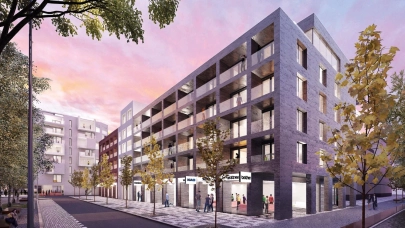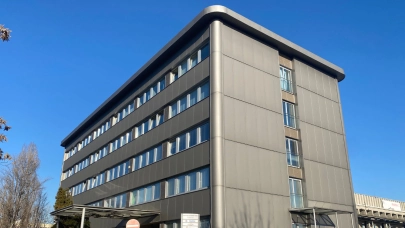
Last year brought yet another record on the Polish investment market. Throughout 2019, the total transaction volume amounted to €7.8 billion which is higher 2018’s figure of €7.2 billion). Thus, Poland has once again proved that it is an attractive and increasingly more liquid market, according to Avison Young’s latest investment market report.
Half of the total transaction volume was generated by offices, which are becoming more and more sought after by investors each year. In 2017, the value of office buildings sold amounted to€ 1.4 billion, in 2018 it was €2.8 billion and last year it was already €3.9 billion. Avison Young consultants point out, that a significant contribution to the total office volume is a growing interest in the regional markets of Kraków, Wrocław, Tri-City and other regions, which in 2019 accounted for 37% of the total office volume, i.e. €1.4 billion.
Older properties gaining interest
Investors value Poland for its excellent development prospects. High demand for office space means that although 1.6 million sqm of new office space is currently under construction, planned to be completed in the years 2020-2021, it will not exert a negative effect on the vacancy rate. Instead, it will provide new investment products to the market.
An interesting phenomenon that can be observed on the Warsaw office market is a steady increase of interest in the buildings built prior to 2000. According to Avison Young’s data, the share of the total volume of such properties in 2017 was only 6%, and in 2019 it reached 30%, i.e. € 1.4 billion. Partly due to the increase in real estate prices, purchasers are more willing to look at older buildings, hoping for value-add returns. Moreover, the older properties are predominantly buildings that have undergone renovations and offer a high standard of lease in a very good location, such as Warsaw Financial Center or Warsaw Trade Tower.
Warehouses boom at the cost of retail
The share of retail properties in the total transaction volume has decreased over the past years. Back in 2017, retail accounted for 44% of all transactions; today it is a mere 25%. This complies with a global trend of turning away from retail triggered by changes taking place in a society and its shopping habits, namely a growing e-commerce market and a tendency to shop in the vicinity of one’s place of residence [convenience retail].
The biggest beneficiaries of this tendency are warehouses whose numbers are growing rapidly, in light of a very high demand from e-commerce tenants and a thriving economy. Currently, there are ca. 1.8 million sqm of warehouse space under construction, which constitutes ca. 10% of the total supply. This boom in the warehouse market is also reflected in the demand from investors, especially from the Far East, whose share in the investment volume continues to grow. Last year, Asian investors were responsible for the transactions of €1.5 billion which constitutes 38% of the value of all warehouses.
With the development of the market and establishment of new categories within a sector [city warehouses, cross-docks, typical build-to-suit, more specialised - production assets leased for long term] Avison Young observes the emergence of specialized investors focused on particular categories of the warehouse investment product.
Retail parks growing stronger
Trends in the retail market described above, combined with growing purchasing power of inhabitants of smaller towns, resulting in the dynamic development of retail parks, which in recent years have become an attractive segment, offering rates of return of 8-9%. In the years 2015-2017, transactions of retail parks amounted to only 1% of the total value of sold retail schemes. In the years 2018-2019, this percentage increased to 4%. This is still marginal value with regards to the total retail investment volume, but definitely worth noting as this 4 % constitute one-fourth of the total amount of retail transactions closed in 2019 (8 of 32).
Due to the above-mentioned factors and after many meetings with the investors, Avison Young experts claim, that this product is sought after and will be even more.
Growing liquidity
An increase in total number of transactions was recorded - in 2019 there were 143, and in 2018 and 2017 respectively 97 and 79. “Higher level of liquidity is always welcomed by investors who are confident that an exit from investment would not be a challenge.” – reminds Michał Ćwikliński, Principal, Managing Director – Poland.
2020 estimations
According to Avison Young’s calculations, in the first quarter of 2020 transactions worth approx. €1.5 billion are planned to be finalised and, traditionally, office buildings will dominate. Analysing other transactions that are currently underway and properties that may be completed in 2020, Avison Young advisors believe that this year will be comparable to the previous year in terms of investment volume and will exceed €7 billion for the third time in a row.
Further yield compression
Avison Young experts are observing further compression of yields in the market. In 2019, prime office buildings achieved yields of 4.5%. Moreover, there is a significant transaction scheduled to be completed in 2020 at a rate of 4.2%. Increased demand for office buildings will put the pressure on further compression of yields in this sector. In the warehouse segment, a record deal was noted in which a Chinese investor purchased a logistics centres fully leased by Amazon for a price corresponding to capitalisation rate of 4.25%.
However, typical new multi-let industrial schemes are being sold for ca. 6.25% - 6.50% depending on the volume. There were no prime retail assets transactions on the retail market last year.
Higher returns
Yield compression has been observed in all European markets, with the pace being higher in Western countries. In 2013 the yield gap in the office sector between Poland and comparable countries such as Spain or the Netherlands amounted to 0.75%, and in 2017 it was already 1.8%. Currently, the yield gap is 1.25% and further decrease is expected. As a result, Avison Young anticipates that yields in Poland’s office sector may fall to 3.75-4% in the coming years, continuing to offer higher returns than Western markets.



